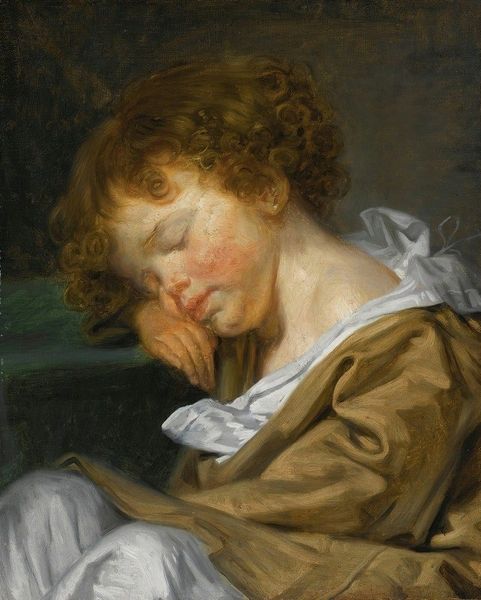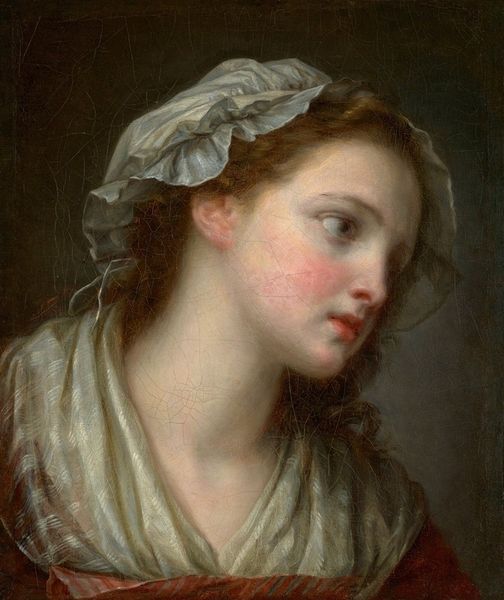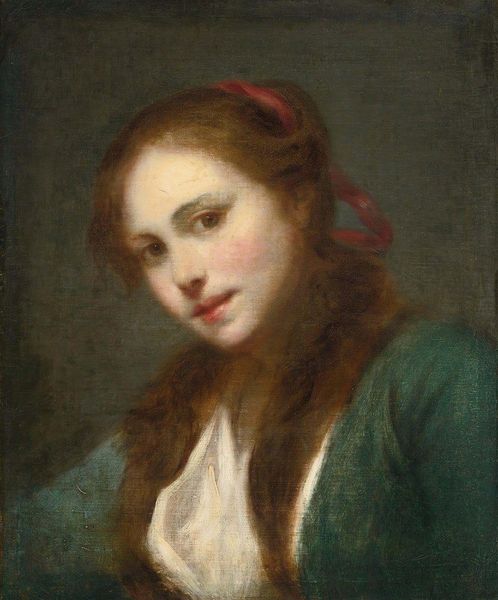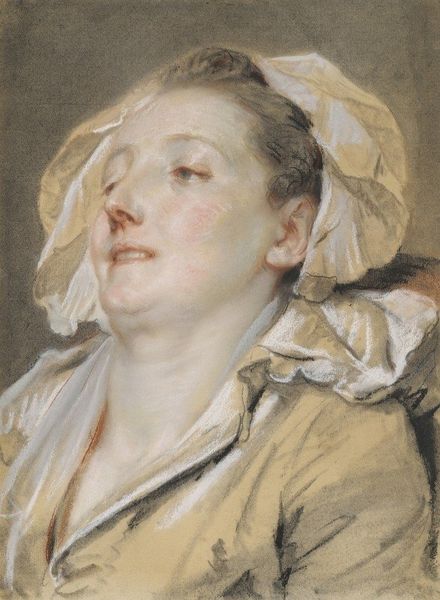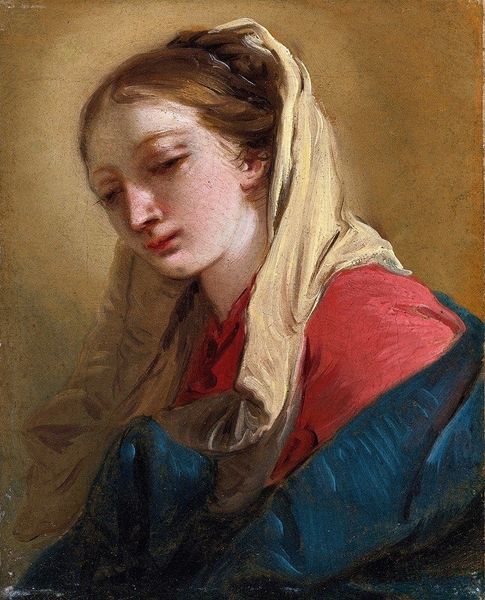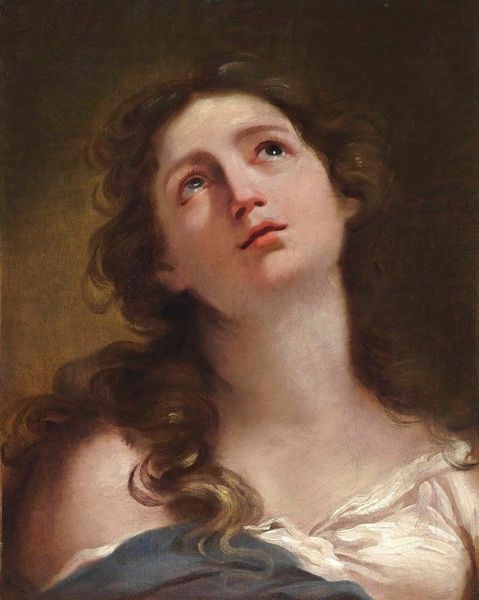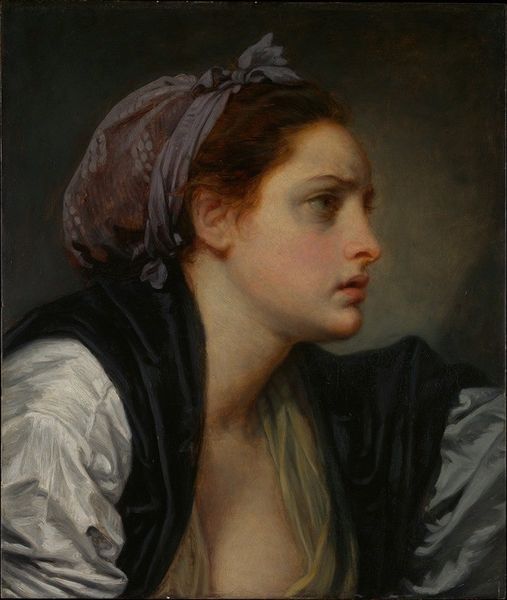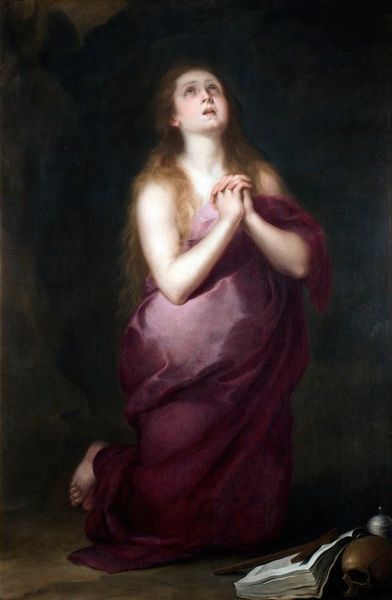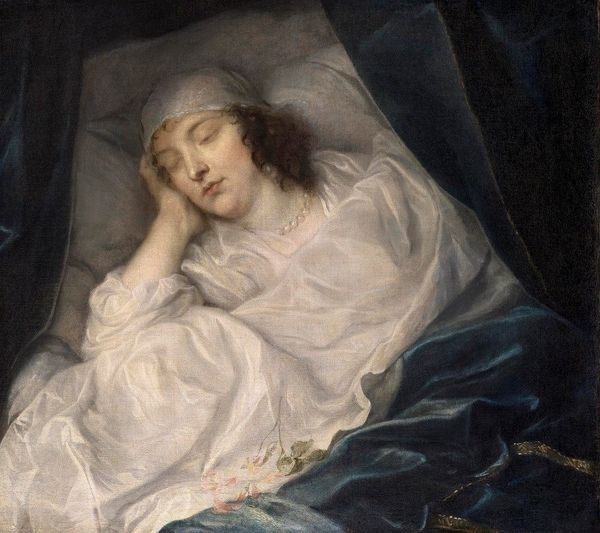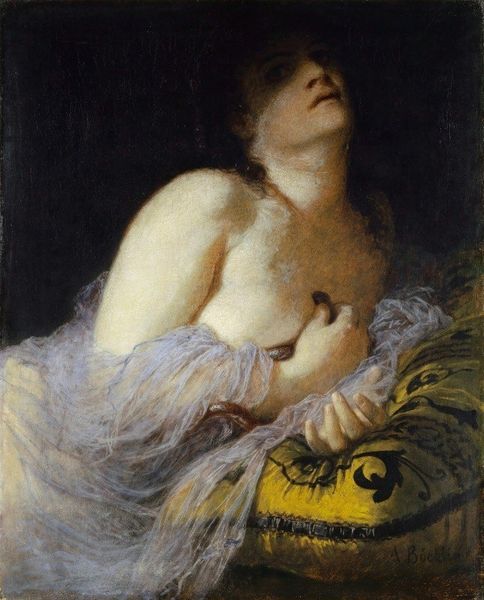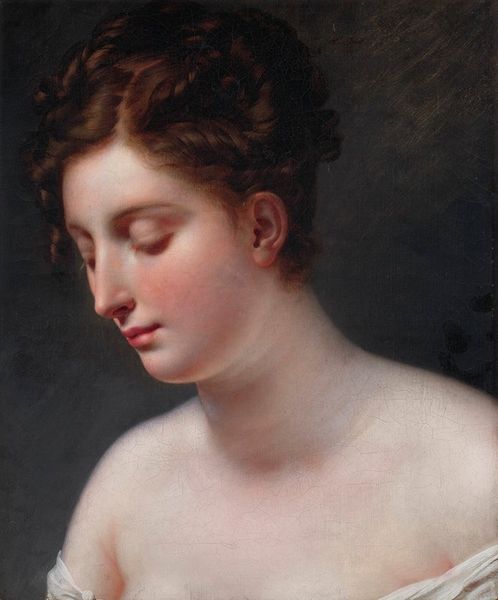
painting, oil-paint
#
portrait
#
figurative
#
painting
#
oil-paint
#
intimism
#
nude
#
rococo
Copyright: Public Domain: Artvee
Curator: Upon viewing "The Dreamer" by Jean-Baptiste Greuze, created sometime between 1765 and 1769, the first thing that strikes me is its ethereal quality. It's as though she's floating in a realm between consciousness and oblivion. Editor: Indeed. Greuze captures an intriguing balance here. Look at the composition, how the light gently falls on her face, creating soft, almost imperceptible gradations. The tonal values, while subtle, lend to a sense of depth and dimensionality. The slight blush on her cheeks and the tender rendering of her slightly parted lips signal an intimacy. Curator: That intimacy feels deliberate. Nudity during this period, especially rendered in such a delicate way, spoke volumes about vulnerability and openness. Considering Greuze's reputation, and Rococo's fondness for these themes, I can’t help but wonder what other hidden societal anxieties or fantasies this image projects onto the canvas. What narrative do you perceive within this captured moment? Editor: Semiotically speaking, the flowing fabric drapes loosely around her body, framing her sensuality without explicitly revealing everything. This creates a kind of visual suggestion. There's also the question of color – the subdued palette evokes serenity and a certain languor, which are key to grasping its structure. Curator: The averted gaze—closed eyes, no connection with the viewer— amplifies that. Is she asleep, dreaming, or lost in a reverie? It begs a more profound inquiry into femininity, expectations, or inner lives permitted at the time. Do you think the cultural expectation of demure passivity might intersect with expressions of inward self-reflection in such portraits? Editor: Undoubtedly. I also believe that her peaceful expression points to the core element—a form of contemplation, which the visual form encourages through softness of color, rounded shapes, and gently illuminated features. But maybe such portraits give agency back to its subject? Or it's more than that... Curator: Perhaps, it encapsulates the evolving representations of femininity within the societal constraints and emerging artistic freedoms of the Rococo era. The emotional resonance still speaks volumes today. Editor: I agree. There's a layered beauty in this artwork. We can appreciate Greuze's skill in shaping our experience. The balance between aesthetic values, narrative implications, and the era is very unique here.
Comments
No comments
Be the first to comment and join the conversation on the ultimate creative platform.
